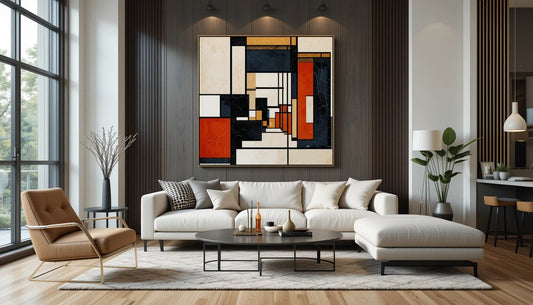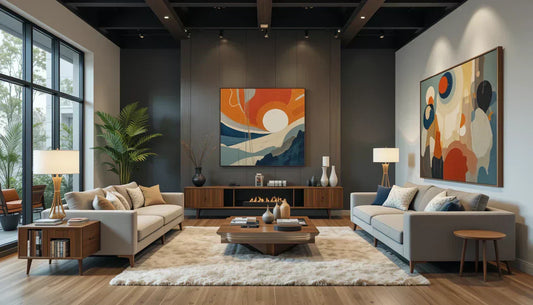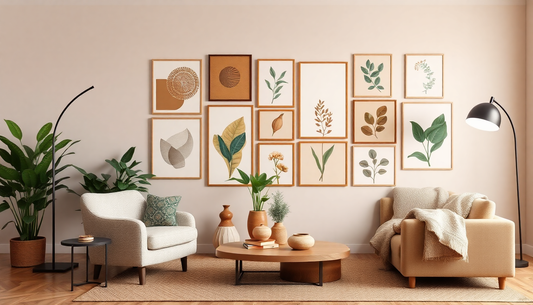
The Enduring Influence of Bauhaus: A Journey Through the Art, Design & Revolutionary Movements
The Bauhaus movement, born in the early 20th century, has left an indelible mark on the world of art, design, and architecture. Its revolutionary approach to unifying creative disciplines and embracing a minimalist, functional aesthetic has inspired generations of artists, designers, and visionaries. In this comprehensive blog post, we'll explore the rich history, key principles, and enduring impact of this iconic movement.
Table of Contents
The Origins and Founding of Bauhaus
The Bauhaus was established in 1919 by the renowned architect Walter Gropius in the German city of Weimar. Gropius envisioned the Bauhaus as a radical departure from the traditional art schools of the time, which he believed had become too insular and disconnected from the practical needs of society. Instead, the Bauhaus sought to bridge the gap between art, craft, and technology, with the ultimate goal of creating a harmonious and functional built environment.
At the heart of the Bauhaus philosophy was the belief that art, design, and architecture should work in tandem to improve the quality of life for all. Gropius and his colleagues rejected the elitist notion of art for art's sake, instead embracing a more democratic and accessible approach to creative expression.
Key Principles and Ideologies
The Bauhaus movement was guided by several core principles that shaped its distinctive aesthetic and approach. One of the most fundamental was the concept of "form follows function," which emphasised the importance of designing objects and structures with a clear and practical purpose in mind. This principle was a direct challenge to the ornate, decorative styles that had dominated much of the 19th and early 20th centuries.
Another key tenet of the Bauhaus was its commitment to minimalism and simplicity. The Bauhaus artists and designers believed that by stripping away unnecessary ornamentation and focusing on the essential elements of a design, they could create objects and spaces that were both visually striking and highly functional.
The Bauhaus also placed a strong emphasis on the integration of various creative disciplines, from painting and sculpture to metalwork and weaving. This interdisciplinary approach was seen as a way to foster collaboration, cross-pollination of ideas, and a more holistic understanding of the creative process.
Influential Bauhaus Artists and Their Works
The Bauhaus attracted some of the most talented and innovative artists and designers of the time, each of whom made significant contributions to the movement's legacy. Among the most renowned Bauhaus figures were Wassily Kandinsky, Paul Klee, László Moholy-Nagy, and Josef Albers.
Kandinsky, a pioneer of abstract art, was a key figure in the Bauhaus's exploration of the expressive potential of color, form, and line. His vibrant, non-representational paintings, such as "Composition VIII" and "Squares with Concentric Circles," exemplified the Bauhaus's embrace of pure, non-objective art.
Paul Klee, known for his whimsical and imaginative style, was another influential Bauhaus artist. His works, such as "Twittering Machine" and "Ad Parnassum," combined playful, organic forms with a deep understanding of colour theory and composition.
László Moholy-Nagy, a Hungarian artist and photographer, was a leading figure in the Bauhaus's experimentation with new media and technologies. His photograms, which were created without a camera by exposing photographic paper to light, demonstrated the Bauhaus's interest in the intersection of art and science.
Josef Albers, a German artist and educator, is perhaps best known for his iconic "Homage to the Square" series, which explored the subtle interplay of colour and perception. Albers's rigorous, systematic approach to art-making embodied the Bauhaus's emphasis on the scientific and analytical aspects of creative practice.
Bauhaus Architecture and Design
The Bauhaus's influence was not limited to the fine arts; it also had a profound impact on the fields of architecture and design. The Bauhaus's emphasis on functionality, simplicity, and the integration of various disciplines led to the creation of some of the most iconic and influential buildings and objects of the 20th century.
In architecture, the Bauhaus's most famous structure is the Bauhaus building in Dessau, designed by Walter Gropius and completed in 1926. This modernist masterpiece, with its clean lines, large windows, and open floor plans, exemplified the Bauhaus's commitment to creating functional, light-filled spaces that prioritised the needs of the occupants.
The Bauhaus's influence can also be seen in the design of everyday objects, from furniture and household items to typography and graphic design. The iconic Wassily chair, designed by Marcel Breuer, is a prime example of the Bauhaus's focus on creating well-designed, mass-producible objects that were both aesthetically pleasing and highly functional.
The Bauhaus School and Its Legacy
The Bauhaus school itself was a crucial component of the movement's lasting impact. Gropius and his colleagues developed a unique curriculum that emphasised the integration of theory and practice, with students receiving training in a wide range of disciplines, from weaving and metalwork to architecture and industrial design.
The Bauhaus school's influence extended far beyond its physical locations in Weimar, Dessau, and Berlin. As the school was forced to close in 1933 due to political pressure from the Nazi regime, many of its faculty and students went on to establish Bauhaus-inspired schools and design studios around the world, spreading the movement's ideas and principles to new generations of artists and designers.
Bauhaus in the Global Context
The Bauhaus's impact was not limited to Germany; its ideas and principles were embraced and adapted by creative communities around the world. In the United States, for example, the Bauhaus-influenced Black Mountain College in North Carolina became a hub for experimental art and design, attracting luminaries such as Josef Albers, Anni Albers, and John Cage.
Similarly, the Ulm School of Design in Germany, founded in 1953 by former Bauhaus instructor Max Bill, carried on the Bauhaus's legacy by continuing to explore the intersection of art, design, and technology. The Ulm School's influence can be seen in the work of designers and architects such as Dieter Rams, whose minimalist, functional designs for Braun electronics have become iconic.
Bauhaus Today: Enduring Inspiration
The Bauhaus movement's influence continues to be felt in the art, design, and architecture of the 21st century. Contemporary artists, designers, and architects have drawn inspiration from the Bauhaus's emphasis on simplicity, functionality, and the integration of various creative disciplines.
In the realm of interior design, the Bauhaus aesthetic has experienced a resurgence, with many homeowners and designers incorporating Bauhaus-inspired elements, such as clean lines, neutral colour palettes, and multifunctional furniture, into their spaces. The Bauhaus's focus on creating harmonious, liveable environments has resonated with a new generation of design enthusiasts.
Moreover, the Bauhaus's legacy can be seen in the work of contemporary artists who have reinterpreted and reimagined the movement's core principles. From the minimalist sculptures of Donald Judd to the conceptual installations of Olafur Eliasson, the Bauhaus's influence continues to shape the creative landscape.
As we look to the future, it is clear that the Bauhaus movement's impact will endure. Its revolutionary approach to art, design, and architecture has left an indelible mark on the world, inspiring generations of creatives to push the boundaries of what is possible and to strive for a more harmonious, functional, and beautiful built environment.
Whether you're looking for a striking abstract piece, a serene landscape, or a bold pop art print, we have something to suit every taste and style. Browse our selection today and find the perfect pieces to transform your home into a true reflection of your personal style.
Get yours today and bring your walls to life with art that speaks to you!
-----------------------
The Team at House Prints


























































